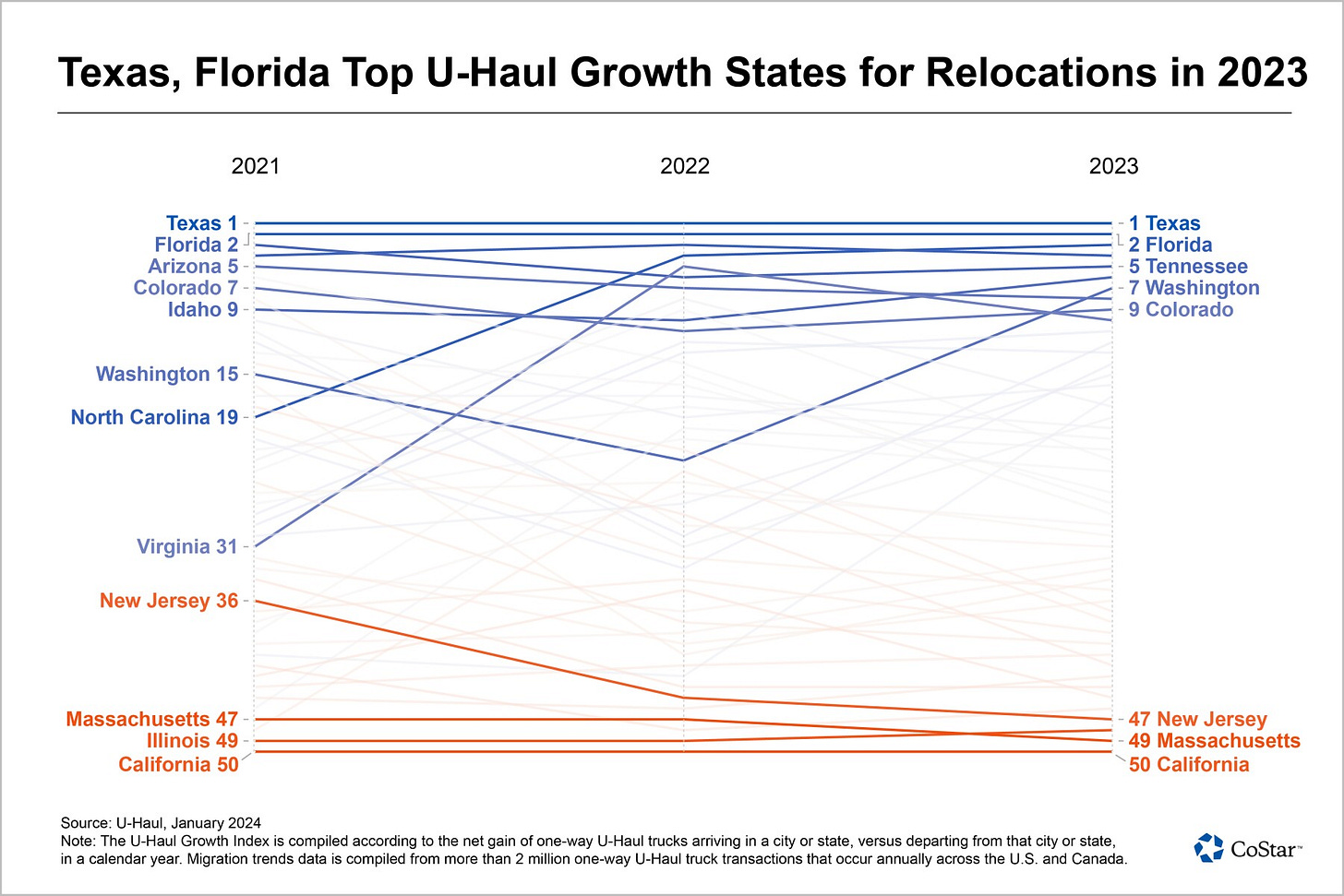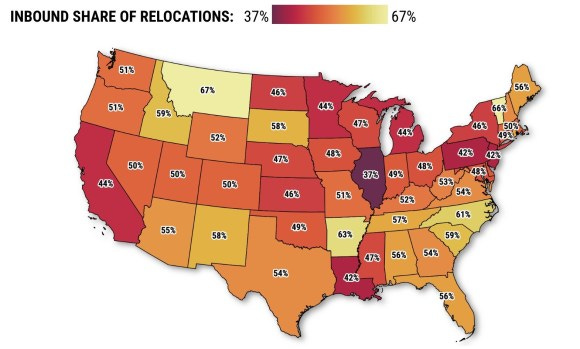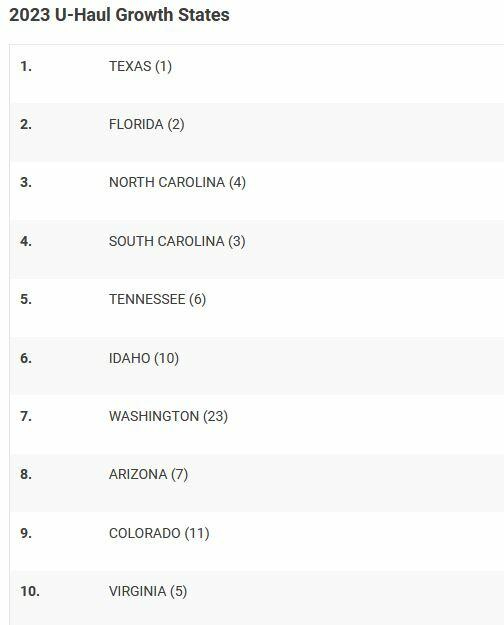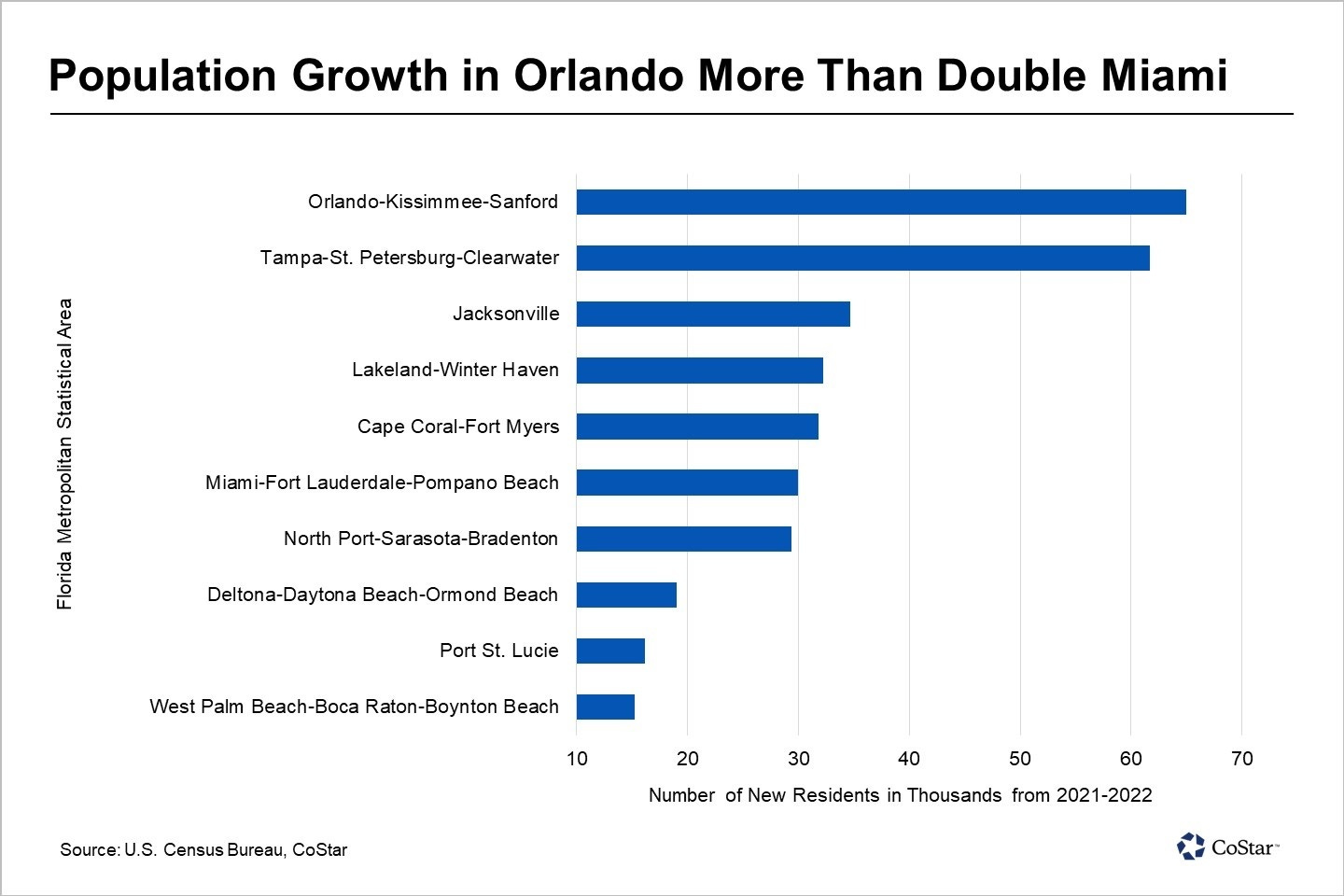Election Anxiety: How CRE is prepping for 2024
Opportunity Zones, SALT deductions, and infrastructure impacts are all on the line in 2024. Also, a look at why NARs membership could crater this year.
The Iowa GOP caucuses are in full swing as we rapidly approach the 2024 election, and the commercial real estate world is intensely interested in how a Biden or Trump victory could shape the industry's future.
Both potential Presidents (and their respective parties) hold wildly differing governing strategies that could have a tremendous impact on the direction of the commercial real estate markets in 2024 and beyond.
A TALE OF TWO CANDIDATES
🏛️ Political Tug-of-War: American voters face a choice between two candidates with vastly different economic and political ideologies. From tax policies to regulatory approaches, each camp promises divergent paths that could significantly impact capital markets and property investment strategies.
🔍 Scrutinizing SALT Deductions: A critical issue at hand is the potential expiration of the $10,000 cap on state and local tax (SALT) deductions in 2025. This policy has been particularly contentious for high-tax states, affecting both individual taxpayers and indirectly influencing commercial real estate markets.
⚖️ Balancing Acts: Industry professionals recall Trump's legacy as a developer and his controversial tax cuts favoring corporate interests over certain regional economies. On the other hand, Biden's infrastructure investments may foster long-term growth in transit-oriented developments which have yet to fully manifest their benefits to CRE.
🤔 Cap Rate Questions: Amid these political crosswinds, multifamily and office sectors grapple with questions around cap rates and rent expectations. As interest rate hikes seem to plateau—with possible reductions on the horizon—investors are cautiously optimistic about borrowing conditions improving.
🌐 Global Considerations: With Trump potentially at the helm again, concerns arise about political stability affecting New York real estate values. Widespread resistance in urban centers like New York could lead to social unrest, posing risks for investors seeking safe harbor in metropolitan real estate.
👁 Eye on Immigration: Unresolved immigration policies continue to strain city budgets and resources. How each candidate intends to address this challenge will inevitably ripple through CRE markets as cities adapt their housing strategies amidst growing migrant populations.
💰 Tax Law Countdown: The expiring provisions of Trump's 2017 tax law—including opportunity zones—await clarity from whoever takes office next year. Commercial real estate players watch closely as these changes could redefine investment landscapes across America.
👀Looking Forward: The future is not set in stone, but one thing is abundantly clear—the decisions made at the ballot box will have an outsized impact on the commercial real estate industry, which has historically been highly dependent on both Federal policy and Federal funds.
Links of the Day
🧑🏫️Our Picks
NAR exodus in Washington: 📉 With cooling markets, court cases, and controversy, the state sees the nation's largest decline in realtor association membership.
Tax Time Bomb: ⏰ America's wealthiest brace for estate tax hike, exploring gifting and trusts to safeguard assets.
60 Minutes report explores new office reality: 🏢 NYC's towering spaces face desolation as the hybrid work trend empties out half of the city's commercial buildings.
Ponzi Scheme Ploy: 🕵️♂️ California scammer pleads guilty to swindling $24M from investors, faces 20 years behind bars.
Fintech Fracas: 🚨 Carta's latest scandal over customer data misuse casts doubt on the company's future amidst halted stock trading operations.
🏭Industrial
BlackRock's Infrastructure Play: 🏗️ $12.5B GIP acquisition signals a pivot towards essential public systems including airports, energy grids, and digital networks.
Charging Forward:🔌The U.S. boosts EV infrastructure with $623M in grants, promising a more connected and eco-friendly future for 22 states and Puerto Rico.
Construction Caution: ⚠️ With muted demand, Cushman & Wakefield notes an uptick in industrial real estate vacancies and a slowdown in new developments.
👪 Multifamily
Timber Triumph: 🌲North America’s tallest mass timber project, The Edison, breaks new ground for eco-conscious investors and residents alike.
Multifamily Mortgage Fraud: 🏢 CT court sentences New Yorkers in complex $50M property loan deception; prison and probation await the culprits.
🏷 Retail
Retail Revolution: 🛸 Walmart soars above the rest with the largest drone-delivery reach in the U.S., now available to 75% of Dallas-Fort Worth homes.
7-Eleven's Big Buy: 🏪 Convenience titan snags over 200 stores in $1B Sunoco deal, bolstering its Southwest US presence.
💼 Office
Office Apocalypse Averted?:🔮 Columbia professor rethinks NYC's future—suggesting revived tourism and city plans could revitalize its once-imperiled office market.
Desk Space Demand: 📈 With a 25% hike in business real estate investment, the return-to-office (RTO) strategy gains ground amid hybrid work model adoption, says Capgemini.
🛍Grab Bag
Helsinki's Hard Line: 🏠 Finland considers barring Russians from property market amid security concerns, as Defense Minister Antti Hakkanen pushes for spring decision.
Mansion Migration: 🚚 LA's elite flee for fiscal freedom, trading ocean views for Nevada havens and Texas estates as a new mansion tax hits home.
Rent Rundown: 📊 From the Golden State's golden rents to Arkansas's budget-friendly rates, see where your state ranks in 2024's rental market.
Price hike ahead: 💹 Despite rate cooldowns, CoreLogic reports a continued uptrend in property values across various metros.
📊Daily Data Visualization
Texas and Florida both topped U-Haul’s annual Growth Index for the third consecutive year.
The latest data from U-Haul paints a clear picture: Americans are on the move, favoring warmer climates, lower taxes, and potentially more job opportunities. North Carolina, South Carolina, and Tennessee follow closely behind in growth, showcasing a broader preference for southern states.
In contrast, California experienced the most significant exodus for the fourth straight year. This aligns with previous patterns of outbound migration from high-cost coastal states to more affordable regions.
U-Haul's proprietary index offers valuable insights into American moving trends by analyzing over 2.5 million one-way equipment transactions each year. The shifts we're observing aren't just state-wide phenomena; specific cities within these growing states are becoming hotspots for new residents.
Florida's metropolitan areas have seen exceptional growth according to U-Haul’s city rankings. Palm Bay-Melbourne leads this urban migration trend, followed by Ocala—both in Florida—and then Charleston-North Charleston in South Carolina. Notably, Austin in Texas continues to be a magnet for movers as well.
Other mentions include College Station-Bryan and Dallas in Texas; Charlotte in North Carolina; Huntsville in Alabama; and Myrtle Beach-North Myrtle Beach in South Carolina—all rounding out this year’s top city destinations according to U-Haul data.
This influx of new residents is set against a backdrop of increased housing supply; however, it remains concentrated within certain regions like Texas and Florida where economic growth appears robust.
While some areas grapple with oversupply and declining rents due to a rapid increase in apartment availability, others benefit from heightened demand that stimulates local economies through increased consumer spending and job creation.
That’s all for today, but we’ll be back tomorrow with your daily dose of the commercial real estate stories you need to read. See you soon.











